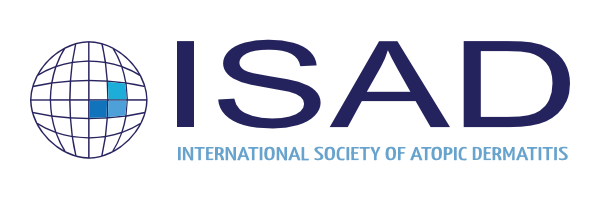- TSST-1 on the Skin: A New Biomarker for Atopic Dermatitis Severity
➜ DOI: 10.1016/j.jaci.2025.05.018
A recent JACI study reveals that the presence of toxic shock syndrome toxin-1 (TSST-1) on the skin of patients with atopic dermatitis (AD) is a strong predictor of disease severity. TSST-1 was found only in patients with Staphylococcus aureus colonization and was associated with higher EASI scores, unlike other staphylococcal superantigens. These findings position TSST-1 as a potential biomarker for AD flares and a target for future diagnostic and therapeutic strategies.
- New Insights from Canine Atopic Dermatitis Epidemiology
➜ DOI: 10.17236/sat00441
A Swiss study of dogs with pruritus with cases collected in two cold and two warm months shows that canine atopic dermatitis (CAD) was the most frequent diagnosis (59,1 %), followed by otitis (26,1 %), pyoderma (22,6 %) and ectoparasites (7,1 %). French bulldog, West Highland White Terrier and American Staffordshire Terrier were overrepresented in the group with CAD compared to the general study population. The majority of dogs with atopic dermatitis exhibited pruritus in the paws, followed by pinna/ear pruritus. Around half of atopic dogs showed pyoderma, while a third had Malassezia dermatitis.
- Novel Genetic Insight in Eczema Herpeticum Susceptibility
➜ DOI: 10.1016/j.jaci.2025.06.011
A German team has identified a single nucleotide polymorphism, rs2973744, in the COL23A1 gene as a novel genetic risk factor for eczema herpeticum (EH) in AD patients. This SNP leads to elevated COL23A1 expression in keratinocytes, which significantly increases susceptibility to Herpes Simplex Virus 1 (HSV-1) infection by upregulating HSV-1 attachment and entry factors like syndecan-1 and nectin-1, while attenuating antiviral responses. These findings suggest COL23A1 as a potential therapeutic target for mitigating HSV-1 infection in AD patients prone to EH.
- A New Approach for Pediatric AD Care: Home-Based Inpatient Program Shows Promise
➜ DOI: 10.1093/bjd/ljaf246
A pilot program for Mobile Inpatient Care at Home (MIC@Home) in Singapore demonstrated significant benefits for pediatric patients experiencing atopic dermatitis flares, offering an effective alternative to traditional hospitalization. This initiative led to a notably shorter in-hospital stay, substantial savings in nursing hours and overall hospital costs, while maintaining comparable clinical outcomes. Caregivers also reported increased confidence in managing flares at home, suggesting that with adequate support, home-based care can enhance healthcare resource utilization and potentially improve patient and family satisfaction.
- Algorithms for Eczema Herpeticum
➜ DOI: 10.1111/all.16632
Allergy offers well-crafted algorithms for the diagnosis and treatment of atopic dermatitis complicated by eczema herpeticum, a severe herpes simplex virus infection. These practical recommendations emphasize the critical need for early diagnosis and prompt management, providing a much-needed structured approach to a potentially life-threatening complication, particularly beneficial in regions with limited access to care like Low and Middle-Income Countries (LMICs).


